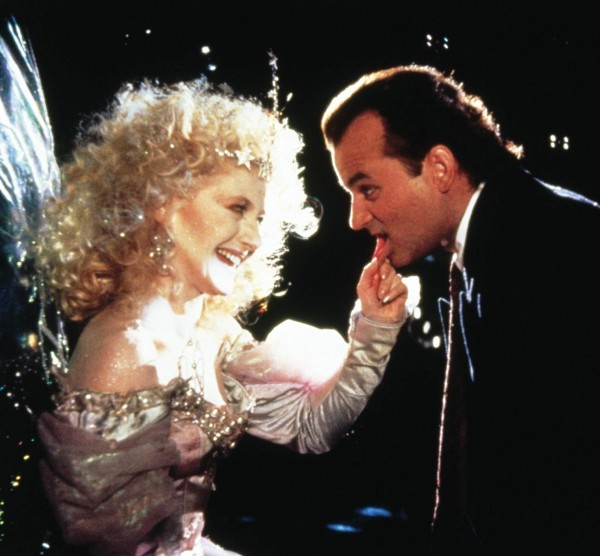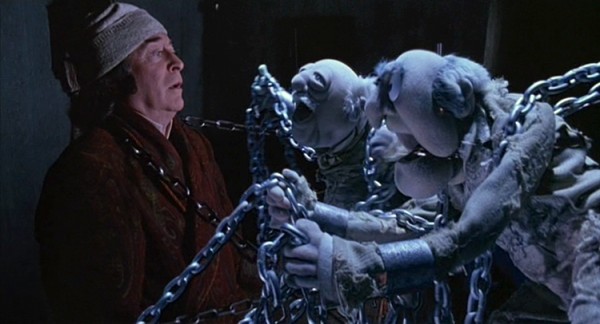There’s a reason Charles Dickens’ A Christmas Carol is one of the most adapted stories of all time, more so than Sherlock Holmes, Shakespeare, or Superman. The reason is simple — It’s a perfect example of dramatic storytelling.
Its three-act structure is personified by three ghosts representing the past, present, and future, which in turn represent beginning, middle, and end — elements necessary for any compelling narrative. It’s filed with social commentary, yet never forgets to entertain. Its message of hope
won’t ever go out of style. The protagonist’s extreme character arc offers thespians more emotions to play than a pregnant woman with a handful of mood rings. No better ticking clock exists than December 25th for one to clean up their act, and no higher stakes than eternal damnation if one fails to do so.
The tale of Ebenezer Scrooge is flawless. Every ingredient is there without an ounce of fat. So all an adaptation has to do to succeed is remain faithful to the text, right? Not necessarily.
Make it too similar and you risk getting lost in a ton of adaptations dating back to 1901’s oddly titled Scrooge, or, Marley’s Ghost. Make it too different and you risk alienating fans like in this year’s Smurfy Smurf version. So which form of adaptation is better — conventional or unconventional? This dilemma has plagued Dickens adapters for decades and the results have run the gamut from “God bless us, everyone” to “Bah, humbug.”
For every praised traditional version starring Alastair Sim or George C. Scott, there’s a non-traditional reimagining such as Rankin-Bass’ The Stingiest Man in Town that gets lambasted by viewers and critics alike. The less said about Beavis & Butthead’s Huh-huh Humbug the better.
Some deviations from the norm produce modern miser masterworks. 1988’s Scrooged took the meta route with Bill Murray as a cynical television exec whose life, unbeknownst to him, mirrors the live retelling of A Christmas Carol that he preps for broadcast. “Masterwork” may be too strong of a word, but it’s definitely become a cult favorite over the years.
Lavishly faithful presentations don’t always guarantee success. Henry Winkler played a great Fonz, but a not-so-great Scrooge. Keeping it old school but altering the genre sometimes works. Musical versions such as the T.V. movie starring Kelsey Grammer abound. Everyone from Walter Matthau to Mr. Magoo have sung and danced their way through Dickens’ classic. However, the best musical rendition by far is 1970’s Scrooge featuring an amazing Albert Finney performance and a songbook of toe-tapping tunes like “I Hate People” and “I Like Life.”
I’ll admit I’m a tad biased to the Finney version since it was my intro to the story, so for me it’s the best version bar none — musical or otherwise. Plus, Marley is played by Obi-Wan Kenobi! But honestly though, I dare you to watch it and not burst out singing “Thank you very much. Thank you very much. That’s the nicest thing that anyone’s ever done for me.” I double dog dare ya.
Sometimes innovation lies in creative casting. The Muppet Christmas Carol (1992) redefines Jacob Marley as Jacob and Marley. In the guise of Statler and Waldorf, the cranky old balcony-warmers, these former partners of Michael Caine’s Ebenezer all but steal the movie.
Every now and then, it pays off to see the old tale from a new perspective. Take for example Jacob Marley’s Christmas Carol. I’d never heard of this book until I saw it at a holiday party hosted by B.T.M.’s own Steve Czarnecki. In the tradition of Rosencrantz and Guildenstern are Dead and The Lion King 1 & 1/2 (seriously), this revisionist take looks at the familiar tale from Marley’s P.O.V. It’s up to Jacob to redeem Scrooge’s soul and to do so, he concocts the scheme of scaring the Dickens (see what happened there?) out of him with the ghostly Christmas trio.
Speaking of ghosts, perhaps the most surreal interpretation comes courtesy of the Ghostbusters. In the X-Mas Marks the Spot episode of The Real Ghostbusters cartoon, Venkman and company unknowingly stumble through a time warp into Victorian era London (as one is want to do) where they save an elderly man from several spooks. Upon returning to modern New York and discovering that everyone now hates Christmas, they realize the man was Mr. Scrooge and that they captured the Ghosts of Christmas before they could reform him. Three of the ‘busters time trip back to London where they try rehabilitating Ebenezer the geezer by impersonating the specters. Meanwhile, Egon enters the containment unit to free the real specters protected by spirits seeking revenge on Egon for imprisoning them. The script, by comic book scribe J. Michael Straczynski, is one of those ideas that makes you slap your forehead V8-style and say, “I wish I thought of that!”
Then there’s Disney’s A Christmas Carol. Not the Mickey Mouse one from the 1980s. That one was pretty good. No, I’m talking about Disney’s other carol from 2009. Starring Jim Carrey and a bunch of proper British actors reduced to dead-eyed mo-cap caricatures (except Carrey who was already a caricature), this edition reflects the dark side of adaptation. The blame falls on Robert Zemeckis who wrote and directed. The performance-capture visuals are creepy, character designs are clunky (Was Fred played by Colin Firth or Jay Leno?), but the real botch stems from needless story additions.
Thanks to the novella’s sparse length, the already lean storyline doesn’t have to be trimmed to fit a two-hour running time. A cast of dozens doesn’t have to be consolidated. So there’s no reason to pad with pointless sequences like Scrooge shrinking to rat size, gaining a high-pitched voice, and sledding on an icicle. (Your grandpa’s Christmas Carol this is not.) Worse than that though is the radical shift in tone.
Alongside the kid-friendly icicle moment are kid-unfriendly parts like Marley’s jaw coming unhinged and the Ghost of Christmas Present dying in a dank bell tower, his body decaying to bone and dust with each chime of the clock. This last bit may be faithful to the source material (in intention, if not execution), but juxtaposing it with the squeaky-voiced icicle jaunt — and another kiddie ride involving a rocketing candle snuffer — is too jarring to enjoy. In Zemeckis’ zest to appeal to everyone, he ends up appealing to no one as evident by the film’s critical and commercial placement on the naughty list.
So in the end, what is the ideal way to adapt Charles Dickens’ beloved yarn — conventional or unconventional? The answer is both, albeit in moderation. (The same could be said of brandy and eggnog.) Scrooge’s banquet of a tale is best served with a side of tradition (George C. Scott), a dash of innovation (Jacob and Marley), and absolutely no — I mean zero, I mean zilch, I mean nada — NO motion-capture whatsoever.
Unless you like that kinda thing, in which case there’s a Polar Express waiting for you around the corner. As for me, I’ll take my carol 50% old school/50% new school, thank you very much.
“Thank you very much.”
“That’s the nicest thing that anyone’s ever done for me!”
Go on. Watch Scrooge without crooning. I triple dog dare ya.
COMING SOON: The Christmas Bends

 December 24th, 2013
December 24th, 2013  Steven D'Arcangelo
Steven D'Arcangelo 




 Posted in
Posted in 







I’m very glad to see the Real Ghostbusters episode mentioned here. That show was well thought out, and that particular episode a favorite. I believe it was also the first time they went inside the containment unit, which became a convention of the series. Many TV shows had notable but mostly forgotten adaptations – check out “The Famous Teddy Z’s” Christmas Carol if you ever get a chance.
Great article. This is one of my favorite stories. Nice comparisons.
Considering the advances in movie making technology, this is a story which could be easily adapted straight from the book without needless revisions or additions. There would be no need to convert it to a musical or comedy. It could be a mix of creepy and frightening to hopeful and uplifting with some comedic elements in the right places. And it could be an incredibly entertaining film. Personally, I have never seen a film adaptation of this story that I truly like.
[…] COMING SOON: Bah, humbug! […]